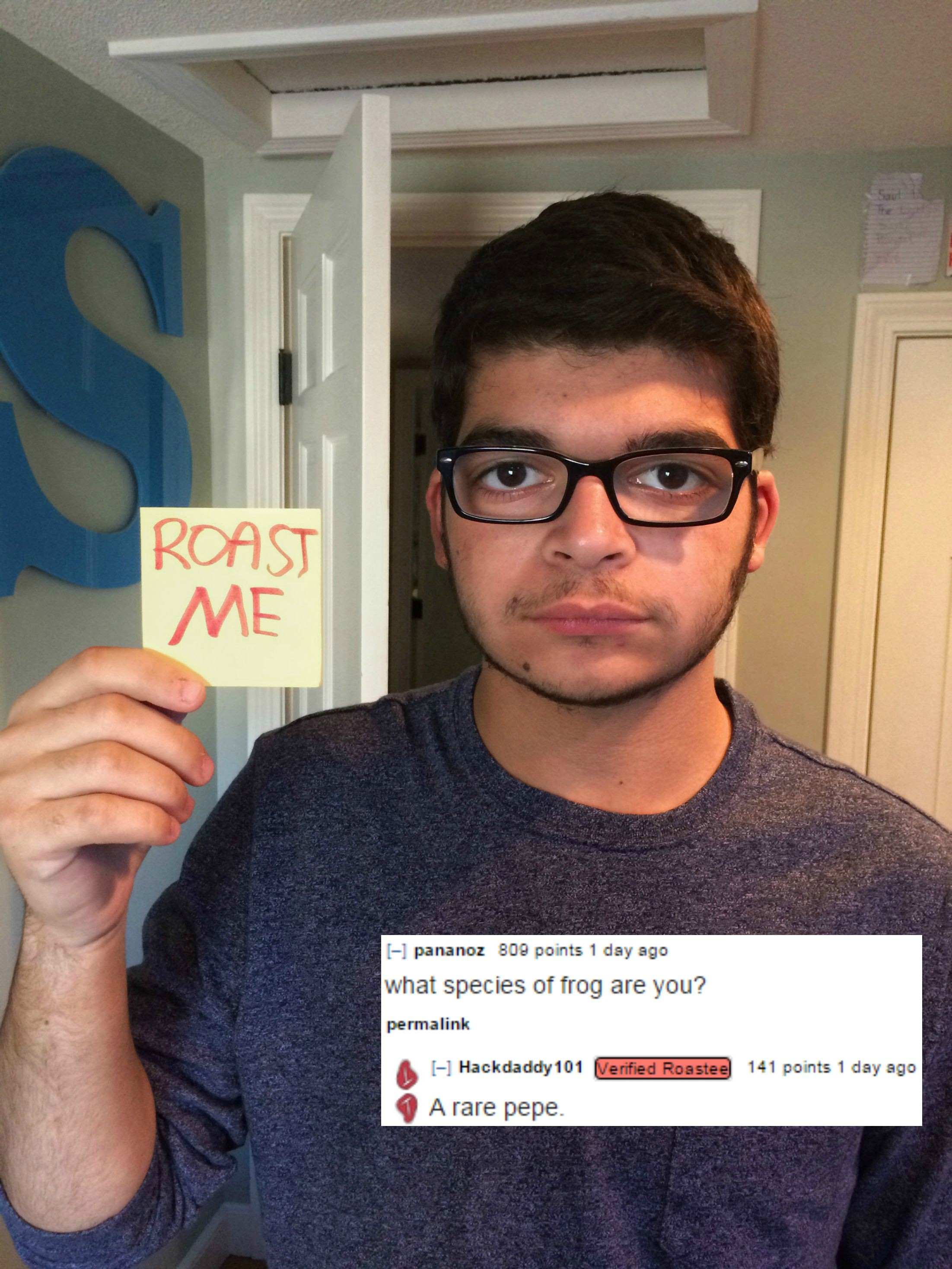There’s nothing quite like a really good roast. It’s that moment when words cut deeper than any knife, leaving the recipient speechless and the audience roaring with laughter. But here’s the thing—it’s not just about throwing insults around. A great roast is an art form, requiring precision, wit, and timing. If done right, it can elevate your humor game and even strengthen relationships (yes, really!). So if you’re here wondering how to roast like a pro or just looking for some killer examples, you’ve come to the right place.
Let’s face it, roasting has been around forever. From Shakespearean plays to modern-day memes, the art of delivering a really good roast is timeless. But with great power comes great responsibility. A poorly executed roast can backfire, leaving you looking like the joke instead of delivering one. In this guide, we’ll dive deep into the world of roasts, exploring everything from the history of roasting to mastering the craft yourself.
Now, before we get started, let me drop a quick disclaimer. This isn’t just a list of “funny insults” or generic comeback lines. We’re talking about crafting really good roasts that pack a punch while still being clever enough to leave people laughing—or at least thinking. Ready? Let’s jump in!
Read also:Kp Rutland A Comprehensive Guide To The Rising Star
What Makes a Roast Truly Memorable?
A really good roast isn’t just about calling someone out or making fun of their flaws. It’s about delivering a line so sharp, so unexpected, that it resonates long after the moment passes. Think about the roasts you remember from movies, TV shows, or even real life. They stick because they’re witty, personal, and delivered with confidence.
Here are a few key elements that make a roast truly memorable:
- Clever Wordplay: A great roast often plays on words, using puns or double meanings to add an extra layer of humor.
- Personalization: The best roasts are tailored to the person being roasted. It’s not just about throwing shade—it’s about hitting them where it hurts in a way only you could.
- Timing: Delivering a roast at the right moment is crucial. Too early, and it might fall flat. Too late, and someone else might beat you to the punch.
- Confidence: Confidence is key. If you hesitate or stutter, the impact of your roast diminishes. Own it, and the audience will be on your side.
So, how do you put all these elements together? Let’s explore further.
The History of Roasting: Where Did It All Begin?
Roasting isn’t a new phenomenon. In fact, it’s been around for centuries, evolving from ancient insult battles to the modern-day art form we know today. Back in the day, poets and playwrights would use their words to humiliate opponents in public forums. William Shakespeare, for example, was a master of the insult, crafting lines that still sting centuries later.
Fast forward to the 20th century, and roasting became a staple of comedy culture. Think about the iconic roasts delivered by comedians like Don Rickles or the legendary Roast of Charlie Sheen. These moments became cultural touchstones, proving that a really good roast can transcend time.
Today, roasting has found a new home on social media platforms, where quick-witted users can deliver burns in just a few characters. But despite the medium changing, the essence remains the same: wit, humor, and a touch of cruelty.
Read also:Beignet Burger Walk Ons Your Ultimate Guide To New Orleans Tastiest Treat
Table of Contents
- The History of Roasting
- What Makes a Roast Truly Memorable?
- Types of Roasts
- Examples of Really Good Roasts
- How to Deliver a Really Good Roast
- Roasting Etiquette: Dos and Don’ts
- The Psychological Impact of Roasting
- Why Are Roasts So Popular?
- Tips for Mastering the Art of Roasting
- Conclusion: Becoming a Roast Master
Types of Roasts: From Light to Savage
Not all roasts are created equal. Depending on the situation and the relationship between the roaster and the recipient, the intensity can vary. Here are a few types of roasts you might encounter:
Light Roasts
These are the playful jabs that barely scratch the surface. Think of them as a friendly nudge rather than a full-on burn. Light roasts are perfect for casual conversations with friends or family.
Medium Roasts
A step up from light roasts, medium roasts have a bit more bite. They’re still playful but carry a bit more weight. These are great for competitive banter or when you want to show off your wit without crossing any lines.
Savage Roasts
These are the roasts that leave no room for misunderstanding. Savage roasts are sharp, direct, and often leave the recipient speechless. Use these sparingly, as they can easily backfire if not delivered in the right context.
No matter which type of roast you choose, the key is knowing your audience and understanding the dynamics of the situation.
Examples of Really Good Roasts
Let’s take a look at some iconic roasts that have stood the test of time:
- Don Rickles: “I saw your wife today, and I was wondering, who does her makeup? The guy who does the clock at Grand Central Station?”
- Roast of Charlie Sheen: “Charlie Sheen is living proof that you can’t spell ‘success’ without ‘ess.’”
- Internet Meme: “You’re the reason the middle child has a syndrome.”
These examples showcase the range of wit and creativity that can go into a really good roast. Notice how each one is tailored to the recipient, adding an extra layer of humor.
How to Deliver a Really Good Roast
Delivery is everything when it comes to roasting. You could have the funniest line in the world, but if you deliver it poorly, it won’t land. Here are a few tips for delivering a really good roast:
- Practice Your Timing: Timing is crucial. Wait for the right moment to deliver your roast, and make sure the audience is paying attention.
- Use Body Language: Your tone, facial expressions, and gestures can enhance the impact of your roast. A well-timed smirk or raised eyebrow can make all the difference.
- Stay Calm and Collected: Confidence is key. If you seem nervous or unsure, the impact of your roast will diminish.
Remember, the delivery can make or break a roast. Practice your lines, know your audience, and own the moment.
Roasting Etiquette: Dos and Don’ts
Roasting can be a lot of fun, but it’s important to follow some basic etiquette to avoid offending or alienating people. Here are a few dos and don’ts to keep in mind:
Do
- Know your audience and tailor your roasts accordingly.
- Keep it light and playful unless you’re absolutely sure the recipient can handle a savage roast.
- Be respectful of boundaries and avoid sensitive topics.
Don’t
- Roast someone in a way that could harm their self-esteem or relationships.
- Use roasts as a way to bully or harass others.
- Go too far with personal or sensitive subjects.
Roasting should be fun, not hurtful. Always consider the impact of your words before delivering a roast.
The Psychological Impact of Roasting
Roasting can have a significant psychological impact on both the roaster and the recipient. For the roaster, delivering a really good roast can boost confidence and establish dominance in social situations. For the recipient, it can either strengthen their resilience or damage their self-esteem, depending on how it’s delivered.
Studies have shown that humor, including roasting, can play a role in social bonding and conflict resolution. When done right, a roast can break the ice and bring people closer together. However, when done poorly, it can create tension and hurt feelings.
Why Are Roasts So Popular?
Roasting has become increasingly popular in recent years, thanks in large part to social media platforms like Twitter and TikTok. These platforms provide a stage for users to showcase their wit and humor, often leading to viral moments that capture the attention of millions.
But why are roasts so appealing? For one, they tap into our natural desire to compete and dominate. Delivering a really good roast can make you feel powerful and respected. Additionally, roasts often involve clever wordplay and humor, which are universally appealing traits.
Tips for Mastering the Art of Roasting
Want to become a master roaster? Here are a few tips to help you sharpen your skills:
- Study Great Roasters: Watch videos of legendary roasts and analyze what makes them work. Learn from the best and incorporate their techniques into your own style.
- Practice Regularly: Like any skill, roasting takes practice. Engage in friendly banter with friends and family to hone your craft.
- Stay Updated: Keep up with current trends and pop culture references to make your roasts more relevant and relatable.
With time and practice, you’ll be delivering really good roasts that leave people laughing—and maybe even a little jealous of your skills.
Conclusion: Becoming a Roast Master
In conclusion, mastering the art of roasting requires a combination of wit, timing, and confidence. Whether you’re delivering a light-hearted jab or a savage burn, the key is knowing your audience and understanding the dynamics of the situation. By following the tips and guidelines outlined in this guide, you’ll be well on your way to becoming a roast master.
So, what are you waiting for? Go out there and start crafting your own really good roasts. And remember, always keep it fun and respectful. After all, the best roasts are the ones that leave everyone smiling—even the person being roasted.
Now, it’s your turn. Share your favorite roast in the comments below, or let us know how you plan to use these tips to elevate your humor game. And don’t forget to check out our other articles for more laughs and insights!


